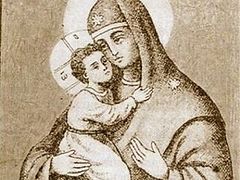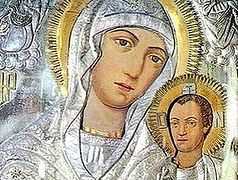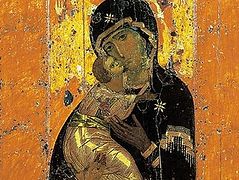Today we celebrate one of the world’s most revered icons of the Mother of God—the Vladimir icon. Tradition has it that this icon, which is now preserved in a church attached to the Tretyakov Art Gallery in Moscow, was originally painted by the holy Apostle Luke, to whom the Most Holy Theotokos entrusted the production of her image for the support of the faithful. Archimandrite Job (Gumerov) of Sretensky Monastery talks about the icons painted by St. Luke.
 Vladimir icon of the Mother of God.
Vladimir icon of the Mother of God. 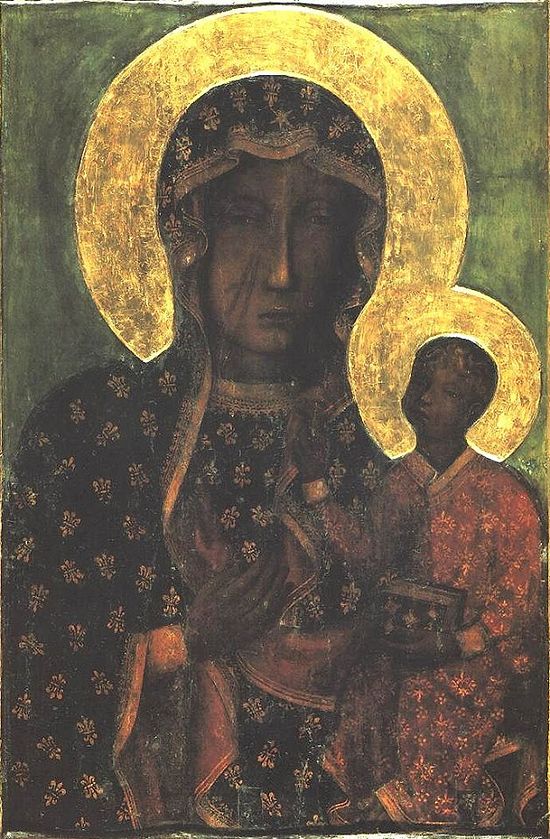 Częstochowa icon of the Mother of God.
Częstochowa icon of the Mother of God. According to tradition, the holy apostle Luke painted the following icons:
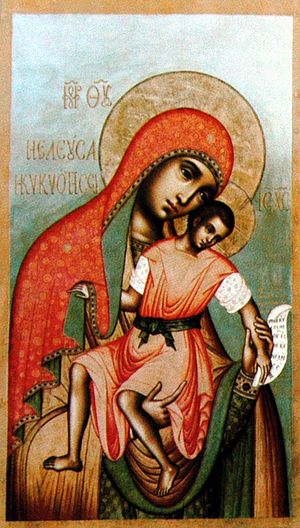 Kykkos Icon.
Kykkos Icon. 2. The Częstochowa icon of the Mother of God (March 6/19). It is located in a Catholic monastery on Jasna Gora in Częstochowa, Poland.
3. The Vilnius icon of the Mother of God (April 14/27).
4. The Vladimir icon of the Mother of God (May 21/June 3; June 23/July 6; August 26/September 8). It was painted on a board from the table at which the Holy Family took food.
5. The Hodigitria-Smolensk Mother of God (July 28/August 10). It is located in the Smolensk Cathedral.
6. The Khakhula icon of the Mother of God (August 15/28). It was located in the Gelata Dormition Monastery near Kutaisi, Georgia.
7. The Korsun icon of the Mother of God (October 9/22). It was brought by Holy Equal-to-the-Apostles St. Vladimir from Cherson to Kiev in 988.
8. The Jerusalem icon of the Mother of God (October 12/15).
More information can be found on these icons and the miracles associated with them in the book by E. N. Poselyanin, The Mother of God. Description of Her Earthly Life and Miracle Working Icons (Moscow, 2002), books 1–2 (Russian). (If anyone can recommend a reliable book on this subject in English, please do so in the comments section.—Trans.).
 The Khakhula icon of the Mother of God.
The Khakhula icon of the Mother of God. 1. Santa Maria Maggiore
2. Santa Maria della Grazia;
3. Santa Maria del Popolo;
4. Santa Maria della Consolazione, and others.


